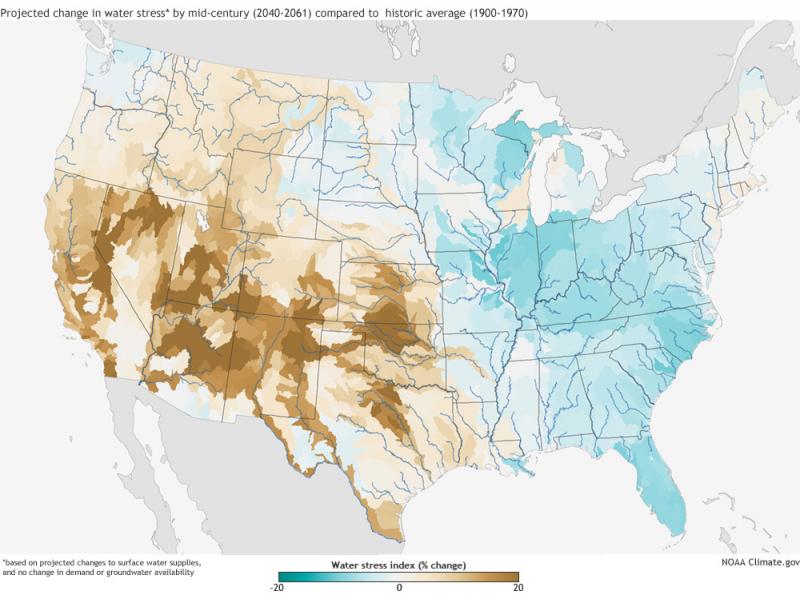Changes in precipitation, temperature, and evaporation rates due to rising carbon dioxide concentrations are projected to increase surface water supplies in most Eastern watersheds (shades of blue) but decrease them in the West (brown). These patterns may be amplified or weakened depending on population growth and groundwater availability.

Water Resources
Waterbodies and wetlands provide crucial habitats for a wide range of animal and plant life and allow for the flow of resources and organisms across the landscape. Increasing temperatures and changing precipitation patterns may raise water temperatures and alter stream flows, which can have detrimental effects on aquatic organisms. As water supplies dwindle, there will be increasing competition for available supplies, with pressure building on reducing the availability of water for natural systems in favor of agriculture and urban uses.
The impacts of climate change on water supplies will be felt across the nation. In the snowmelt-driven river systems that dominate the western United States, peak runoff is already coming earlier in the year, and creating longer, hotter dry seasons—a trend that is likely to continue in coming decades. In the Southeast, rising temperatures are likely to reduce water supplies by increasing evaporation rates, even if precipitation rates do not change. For the Great Plains, where the water supply is largely dependent on groundwater, recent declines in winter and spring soil moisture don’t bode well for aquifer recharge rates in warmer climate conditions.
This section has been excerpted and abridged from the report Climate Change Impacts in the United States: The Third National Climate Assessment (Chapter 3: Water Resources and Chapter 17: Southeast and The Caribbean).
Alaska's Kobuk River. By Neal Herbert, National Park Service, Alaska Region. CC BY 2.0, https://creativecommons.org/licenses/by/2.0/, via Flickr




